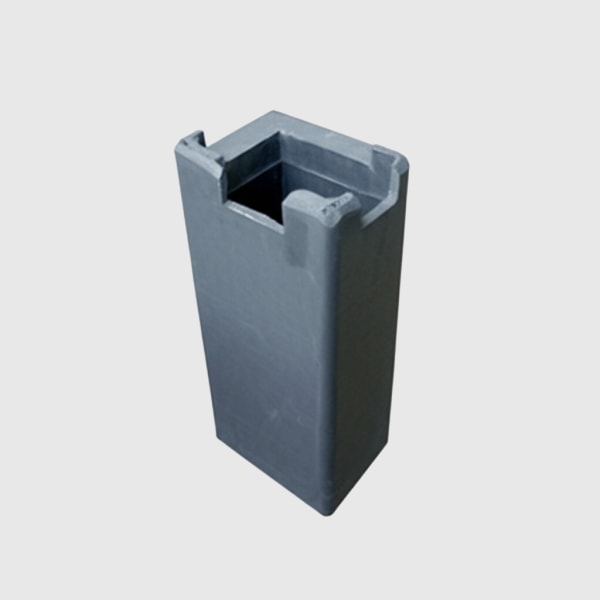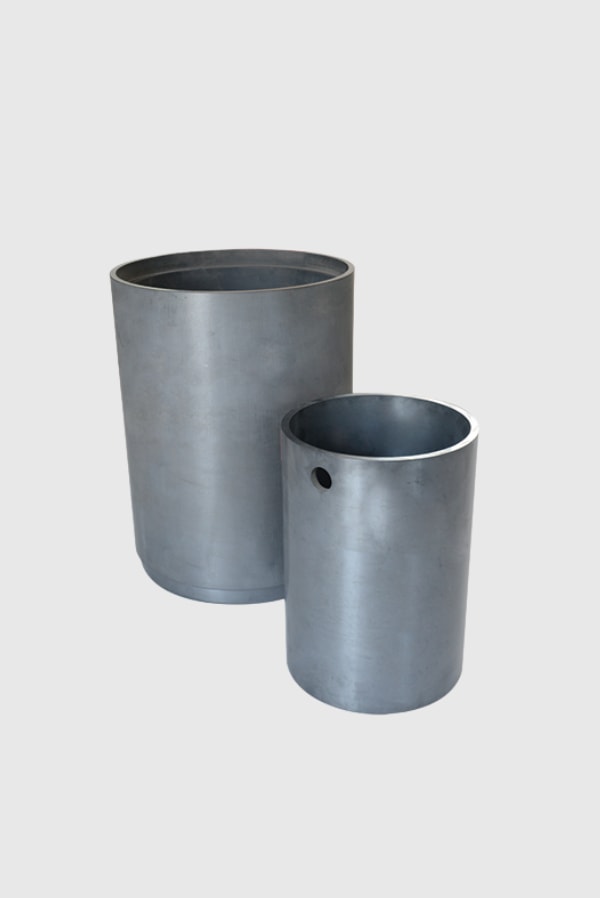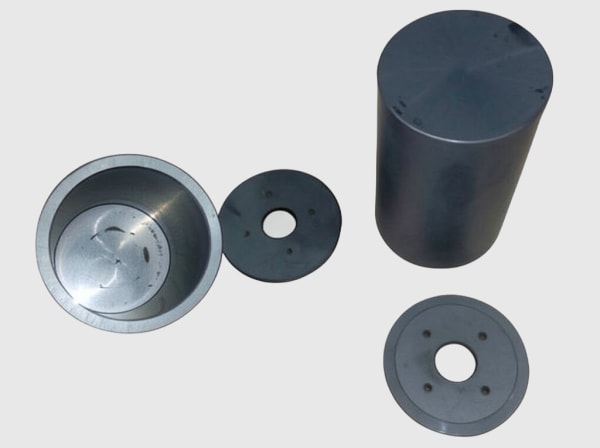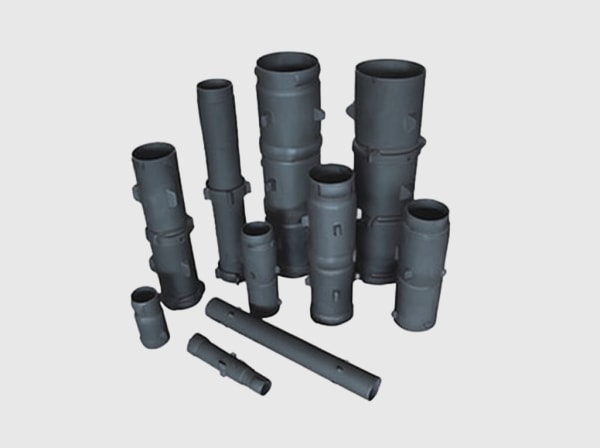SiC Pressure Forming for Enhanced Component Strength
Introduction: The Rising Demand for High-Strength SiC Components via Pressure Forming
In the ever-evolving landscape of advanced materials, Silicon Carbide (SiC) stands out for its exceptional properties, including high hardness, excellent thermal conductivity, superior wear resistance, and robust chemical inertness. These characteristics make SiC indispensable across a multitude of demanding industrial applications, from semiconductor manufacturing and aerospace engineering to power electronics and renewable energy systems. As a technical content writer for a company specializing in custom silicon carbide products and equipment, we understand the critical need for components that not only meet but exceed performance expectations. One manufacturing technique gaining prominence for producing SiC parts with superior mechanical integrity is SiC pressure forming. This method is pivotal in creating near-net-shape components with enhanced density and strength, addressing the growing industry demand for reliability and longevity in harsh operational environments. For engineers, procurement managers, and technical buyers in sectors like automotive, metallurgy, defense, and LED manufacturing, understanding the nuances of SiC pressure forming is key to unlocking new levels of component performance and system efficiency. This blog post will delve into the intricacies of SiC pressure forming equipment and its role in fabricating high-strength, custom silicon carbide components designed for optimal durability.
Understanding SiC Pressure Forming: The Technology Behind Superior Components
SiC pressure forming, often referred to as pressure-assisted sintering or gas pressure sintering (GPS) for certain variants, is an advanced manufacturing process designed to produce dense, high-strength silicon carbide components. Unlike simpler forming methods like cold pressing or slip casting alone, pressure forming combines mechanical pressure, and often temperature, to consolidate SiC powders into a green body with significantly higher initial density and more uniform particle packing. This process typically involves:
- Material Preparation: High-purity SiC powders are carefully selected and mixed with appropriate binders and plasticizers to create a formable feedstock. The characteristics of this feedstock are crucial for the success of the pressure forming process.
- Tooling: Precision-engineered molds or dies, typically made from hardened steel or other wear-resistant materials, are designed to the exact specifications of the desired component. The tooling must withstand the high pressures involved.
- Forming: The SiC feedstock is loaded into the mold cavity. A combination of controlled pressure (isostatic or uniaxial) is applied. In some pressure forming techniques, such as those related to reaction bonding or certain types of sintering, pressure is applied during the heating cycle. For instance, Hot Isostatic Pressing (HIP) applies high pressure and temperature simultaneously, while Gas Pressure Sintering (GPS) uses high gas pressure at elevated temperatures during the sintering phase to achieve near-full densification.
- Green Body Ejection: Once the forming cycle is complete, the compacted “green” SiC part is ejected from the mold. This green part has a higher density and strength than those produced by lower-pressure methods, making it easier to handle and less prone to defects during subsequent processing steps like debinding and sintering.
The primary goal of SiC pressure forming equipment is to minimize porosity and maximize material density before the final sintering stage. This results in components with significantly improved mechanical properties, such as flexural strength, fracture toughness, and hardness. The controlled application of pressure ensures a more homogenous microstructure, reducing internal flaws that can act as stress concentrators and lead to premature failure. For industries demanding high-performance SiC parts, pressure forming offers a pathway to components that can withstand extreme conditions, making it a cornerstone technology in advanced ceramics manufacturing.
Key Industrial Applications: Where SiC Pressure Forming Excels
The superior properties imparted by SiC pressure forming make these components highly sought after in a wide array of industrial sectors. The ability to produce complex geometries with enhanced strength opens doors for SiC in applications previously limited by manufacturing constraints or material performance. Below are some key industries and their applications for pressure-formed SiC:
| Industry | Specific Applications of Pressure-Formed SiC Components | Key Benefits |
|---|---|---|
| Semiconductor Manufacturing | Wafer chucks, dummy wafers, CMP rings, end effectors, furnace components (e.g., cantilever paddles, process tubes, liners) | High stiffness, thermal stability, plasma erosion resistance, purity |
| Automotive | Brake discs, clutch components, diesel particulate filter (DPF) segments, turbocharger rotors, wear-resistant seals and bearings for electric vehicles | Lightweight, high wear resistance, excellent thermal shock resistance, high-temperature strength |
| Aerospace & Defense | Mirror substrates for optical systems, rocket nozzles, armor plating, leading edges for hypersonic vehicles, heat exchanger components | High stiffness-to-weight ratio, thermal stability, erosion resistance, ballistic performance |
| Power Electronics | Heat sinks, substrates for power modules, insulating components, components for high-voltage switchgear | High thermal conductivity, electrical insulation, high-temperature operation |
| Renewable Energy | Components for concentrated solar power (CSP) systems, bearings and seals for wind turbines, heat exchangers in geothermal systems | High-temperature stability, corrosion resistance, wear resistance |
| Metallurgy & High-Temperature Processing | Crucibles, furnace furniture (beams, rollers, supports), burner nozzles, thermocouple protection tubes, molten metal handling components | Exceptional high-temperature strength, thermal shock resistance, chemical inertness |
| Chemical Processing | Pump components (seals, impellers, liners), valve parts, heat exchanger tubes, nozzles for corrosive environments | Outstanding chemical resistance, wear and erosion resistance |
| LED Manufacturing | Susceptors for MOCVD reactors, wafer carriers | High thermal uniformity, chemical stability at high temperatures |
| Industrial Machinery | Wear parts, precision shafts and bearings, nozzles for abrasive blasting, mechanical seals | Extreme hardness, wear resistance, dimensional stability |
The versatility of custom silicon carbide parts produced via pressure forming equipment ensures that engineers and procurement managers across these diverse fields can leverage SiC’s unique advantages to enhance product performance, improve process efficiency, and extend service life, ultimately leading to cost savings and technological advancement.
The Unmatched Advantages of Pressure-Formed Silicon Carbide
Opting for silicon carbide components manufactured using pressure forming techniques offers a compelling suite of advantages, particularly crucial for applications demanding the highest levels of performance and reliability. These benefits stem directly from the improved microstructure and density achieved through the process:
- Enhanced Mechanical Strength: Pressure forming significantly reduces porosity, leading to higher density. This directly translates to improved flexural strength, compressive strength, and fracture toughness compared to SiC parts made by conventional pressing methods. Components can withstand higher mechanical loads and impacts.
- Superior Wear Resistance: The increased hardness and density of pressure-formed SiC make it exceptionally resistant to abrasive and erosive wear. This is critical for parts like nozzles, seals, bearings, and components handling particulate-laden fluids.
- Improved Thermal Management: While SiC inherently has good thermal conductivity, the densification achieved through pressure forming can enhance this property by ensuring better particle-to-particle contact, leading to more efficient heat dissipation in applications like heat sinks and power electronics substrates.
- Greater Thermal Shock Resistance: A uniform, dense microstructure helps in better withstanding rapid temperature changes without cracking or failure, essential for furnace components, automotive brakes, and aerospace applications.
- Near-Net-Shape Manufacturing: Advanced pressure forming techniques can produce complex geometries with tighter dimensional tolerances in the “as-formed” state. This reduces the need for extensive and costly post-machining, which is particularly challenging for hard materials like SiC.
- Increased Component Reliability and Lifespan: The reduction of internal defects and improved homogeneity means that pressure-formed SiC components exhibit more predictable performance and a longer operational life, even in severe service conditions. This reduces downtime and maintenance costs.
- Suitability for Large and Complex Components: Certain pressure forming methods, like isostatic pressing variants, are well-suited for producing larger and more intricate SiC parts that would be difficult or impossible to manufacture to the same quality using other techniques.
- Better Hermeticity: The high density achieved can lead to components with very low permeability, crucial for applications requiring gas-tight seals or barriers, such as in chemical reactors or vacuum systems.
For B2B clients, including OEMs and technical procurement professionals, these advantages translate into a higher value proposition. By investing in pressure-formed SiC solutions, companies can deliver more robust, efficient, and durable end-products, gaining a competitive edge in their respective markets. The focus on material integrity from the initial forming stage is what sets these advanced ceramics apart.
Choosing the Right Silicon Carbide Grade for Pressure Forming Applications
The success of a silicon carbide component heavily relies on selecting the appropriate SiC grade, especially when utilizing pressure forming techniques. Different grades offer varying properties, and their suitability for pressure forming and the end application can differ. Here’s a look at some common SiC grades and their relevance:
| SiC Grade | Key Characteristics | Pressure Forming Suitability | Typical Applications |
|---|---|---|---|
| Sintered Silicon Carbide (SSiC) | Fine grain size, high purity (typically >98%), excellent corrosion resistance, high strength and hardness, good thermal shock resistance. Formed from SiC powder with sintering aids. | Highly suitable. Pressure forming (e.g., gas pressure sintering or HIPing of pre-formed shapes) is often used to achieve near-theoretical density and optimal properties. | Mechanical seals, bearings, nozzles, valve components, semiconductor processing parts, chemical pump parts. |
| Reaction-Bonded Silicon Carbide (RBSiC or SiSiC) | Contains free silicon (typically 8-15%), good thermal conductivity, excellent wear resistance, moderate strength, good dimensional control as there’s little to no shrinkage during firing. Formed by infiltrating a porous SiC + Carbon preform with molten silicon. | Pressure forming can be used for the initial SiC/Carbon preform to achieve higher green density and better control over the final microstructure before silicon infiltration. | Kiln furniture, heat exchangers, wear liners, burner nozzles, large structural components. |
| Nitride-Bonded Silicon Carbide (NBSiC) | SiC grains bonded by a silicon nitride (Si3N4) phase. Good thermal shock resistance, good abrasion resistance, moderate strength. | Pressure forming techniques can be applied to the SiC/additive mixture prior to nitridation and firing to enhance density and mechanical properties. | Furnace linings, cyclone components, molten metal contact parts, applications requiring good thermal cycling. |
| Hot-Pressed Silicon Carbide (HPSiC) | Produced by uniaxial pressing at high temperatures, resulting in very high density and fine grain structure. Excellent mechanical properties. | This is itself a pressure forming technique. Typically used for simpler shapes due to die limitations but achieves top-tier properties. | Cutting tools, armor, high-wear components, specialized optics. |
| Recrystallized Silicon Carbide (RSiC) | High purity, self-bonded SiC with high porosity but excellent thermal shock resistance and high-temperature strength. | Less commonly combined with high-pressure forming for densification, as its porous nature is often a desired feature. However, initial forming steps could involve pressure. | Kiln furniture, setters, crucibles for high-temperature applications where porosity is acceptable or beneficial. |
When selecting an SiC grade for a pressure forming process, consider the following:
- Desired Final Properties: Match the grade’s inherent strengths (e.g., SSiC for corrosion resistance, RBSiC for thermal conductivity) with application requirements.
- Complexity of Shape: Some grades and their associated pressure forming methods are better suited for intricate designs.
- Operating Environment: Temperature, chemical exposure, and mechanical stresses will dictate the most robust grade.
- Cost Considerations: Different grades and forming processes have varying cost implications.
Working with an experienced SiC supplier who understands the interplay between material grades and advanced forming techniques like pressure forming is crucial for achieving optimal component performance. For specialized requirements, exploring customizing support can lead to tailored SiC solutions.
Critical Design Considerations for Optimal SiC Pressure Forming Outcomes
Designing components for SiC pressure forming requires a specific set of considerations to ensure manufacturability, optimal performance, and cost-effectiveness. The unique characteristics of SiC powders and the mechanics of pressure forming processes necessitate careful attention to detail during the design phase. Key considerations include:
- Design for Manufacturability (DfM):
- Uniform Wall Thickness: Aim for consistent wall thicknesses to ensure uniform pressure distribution, even powder compaction, and consistent shrinkage during sintering. Abrupt changes in thickness can lead to density variations and stress concentrations.
- Draft Angles: Incorporate slight draft angles (tapers) on vertical surfaces to facilitate easy ejection of the green part from the mold, reducing stress on the component and wear on the tooling.
- Radii and Fillets: Use generous radii and fillets on internal and external corners instead of sharp edges. Sharp corners are prone to chipping, cracking, and stress concentration, and can be difficult to fill uniformly during powder compaction.
- Avoid Undercuts and Complex Internal Cavities: While some pressure forming techniques offer more geometric freedom, overly complex internal features or undercuts can significantly complicate tooling design, increase costs, and may not be feasible.
- Shrinkage Allowances: SiC components typically shrink significantly during the debinding and sintering stages (which follow pressure forming). The exact shrinkage rate depends on the SiC grade, powder characteristics, green density achieved, and sintering parameters. This shrinkage must be accurately predicted and accounted for in the mold design to achieve the desired final dimensions.
- Tooling Design and Material:
- The tooling for SiC pressure forming must be robust enough to withstand high compaction pressures and be made from wear-resistant materials (e.g., hardened tool steels, tungsten carbide inserts for high-wear areas).
- Tooling complexity directly impacts cost and lead time. Simplifying part geometry where possible can reduce tooling expenses.
- Consideration for multi-cavity molds for higher volume production to reduce per-part cost.
- Aspect Ratios and Slenderness: Very high aspect ratios (length-to-diameter or length-to-thickness) can be challenging. Long, slender parts may be prone to warping during sintering or may experience uneven densification.
- Hole Design: Through-holes are generally easier to form than blind holes. The diameter and depth of holes, as well as their proximity to edges, need careful consideration. Small, deep holes can be difficult to form reliably.
- Surface Features: Intricate surface details like lettering or complex textures can be incorporated but may require more sophisticated tooling and process control. Assess if these features are critical or can be achieved through post-processing.
- Tolerance Stacking: Understand how tolerances on different features can accumulate and affect the final assembly or functionality of the SiC component.
Engaging with your SiC component supplier early in the design process is highly recommended. Their expertise in SiC pressure forming equipment capabilities and material behavior can help optimize the design for production, ensuring that the final parts meet both performance specifications and manufacturing realities. This collaborative approach minimizes redesigns, reduces costs, and shortens lead times for industrial SiC components.
Achieving Precision: Tolerances, Surface Finish, and Dimensional Integrity in Pressure-Formed SiC
One of the significant benefits of SiC pressure forming is its ability to produce near-net-shape components, but understanding achievable tolerances, surface finishes, and overall dimensional integrity is crucial for engineers and procurement managers. Silicon Carbide is an extremely hard material, making post-sintering machining (grinding, lapping) costly and time-consuming. Therefore, maximizing precision in the forming stage is paramount.
Tolerances:
- As-Formed Tolerances: The tolerances achievable directly from the SiC pressure forming process (after sintering) depend on several factors:
- The specific pressure forming technique (e.g., isostatic pressing generally offers good uniformity).
- The quality and precision of the tooling.
- The consistency of the SiC powder and binder mixture.
- The predictability and control of shrinkage during sintering (can range from 15-25%).
Generally, as-sintered dimensional tolerances for pressure-formed SiC can range from ±0.5% to ±2% of the dimension. For critical dimensions, tighter tolerances may be possible with careful process control but often require subsequent machining.
- Machined Tolerances: For applications demanding very high precision, post-sintering grinding, lapping, and polishing are necessary. With these processes, extremely tight tolerances can be achieved:
- Dimensional tolerances down to ±0.001 mm (±1 µm) are possible for specific features with advanced grinding.
- Flatness and parallelism can also be controlled to micrometer levels.
Surface Finish:
- As-Sintered Surface Finish: The surface finish of a pressure-formed and sintered SiC part typically ranges from Ra 0.8 µm to Ra 3.2 µm (32 to 125 µin). This depends on the fineness of the starting SiC powder, the surface of the mold, and the sintering conditions.
- Improved Surface Finish:
- Grinding: Can improve surface finish to Ra 0.2 µm to Ra 0.8 µm.
- Lapping and Polishing: For applications like optical components, semiconductor wafer chucks, or high-performance seals, surfaces can be lapped and polished to achieve an exceptionally smooth finish, often below Ra 0.02 µm (less than 1 µin).
Dimensional Integrity:
Achieving overall dimensional integrity involves managing warpage, distortion, and ensuring geometric features are as intended. Pressure forming helps by:
- Promoting Uniform Density: Higher green density and uniformity reduce differential shrinkage, which is a primary cause of warpage.
- Near-Net-Shape Capability: This minimizes the amount of material removal needed post-sintering, preserving the integrity of the as-formed shape.
It’s important for technical buyers to clearly communicate their required tolerances and surface finish specifications to the SiC supplier. This allows for an appropriate manufacturing strategy, including decisions on whether as-sintered properties are sufficient or if secondary machining operations are needed. Discussing these requirements for precision SiC components early ensures that the final product meets all functional and assembly criteria.
Essential Post-Processing for Pressure-Formed SiC Components
While SiC pressure forming aims to create near-net-shape parts, some level of post-processing is often necessary to meet final specifications for tolerance, surface finish, or to enhance specific properties. Given the extreme hardness of Silicon Carbide, these post-processing steps require specialized equipment and expertise.
- Debinding (Binder Removal):
After pressure forming, the green SiC part contains organic binders that provided plasticity for molding. These binders must be carefully removed before high-temperature sintering. Debinding is typically a controlled thermal process where the part is slowly heated in a specific atmosphere to allow the binders to decompose and outgas without causing defects like cracks or blisters in the component. The temperature and ramp rates are critical.
- Sintering:
This is a crucial high-temperature firing process (often 1800°C to 2200°C or higher, depending on the SiC grade) that densifies the SiC powder compact into a hard, strong ceramic. During sintering, particle-to-particle bonds form, porosity is reduced, and the material achieves its final mechanical and thermal properties. For pressure-formed parts, sintering may occur under vacuum, inert atmosphere, or, as in Gas Pressure Sintering (GPS), under high gas pressure to achieve maximum densification.
- Machining (Grinding, Lapping, Polishing):
Due to SiC’s hardness (second only to diamond and boron carbide), machining is done using diamond tooling.
- Grinding: Used to achieve precise dimensional tolerances, flatness, parallelism, and to shape features that couldn’t be perfectly formed during the pressing stage. Diamond grinding wheels are essential.
- Lapping: Achieves very flat surfaces and fine surface finishes by abrading the SiC surface with a fine diamond slurry on a flat plate.
- Polishing: Follows lapping to produce an even smoother, mirror-like surface finish, critical for optical applications, seals, and some semiconductor components.
- Ultrasonic Machining or Laser Machining: May be used for complex features like small holes or intricate patterns that are difficult with conventional diamond grinding.
- Cleaning:
After machining or handling, SiC components often undergo rigorous cleaning processes to remove any contaminants, machining residues, or particulates. This is especially critical for parts used in high-purity environments like semiconductor manufacturing or medical devices.
- Coatings (Optional):
In some applications, SiC components might be coated to further enhance certain properties:
- CVD SiC Coating: A layer of high-purity Chemical Vapor Deposited (CVD) SiC can be applied to improve corrosion resistance, wear resistance, or purity of a sintered SiC substrate.
- Other coatings: Depending on the application, other ceramic or metallic coatings might be applied for specific functional reasons.
- Inspection and Quality Control:
Throughout the post-processing stages, rigorous inspection is performed. This includes dimensional checks (using CMMs, micrometers, etc.), surface finish measurement, NDT (Non-Destructive Testing like X-ray or ultrasonic inspection) to detect internal flaws, and material property verification. This ensures that the finished SiC components meet all quality standards and customer specifications.
Each of these post-processing steps adds to the overall cost and lead time of SiC components. Therefore, optimizing the design for near-net-shape manufacturing via pressure forming is key to minimizing these downstream efforts while still achieving the desired performance and quality.
Navigating Challenges in SiC Pressure Forming and Manufacturing
Manufacturing high-quality Silicon Carbide components using pressure forming techniques is a sophisticated process that comes with its own set of challenges. Understanding these potential hurdles is important for both manufacturers and buyers to set realistic expectations and collaborate effectively on solutions.
- Material Brittleness: SiC is inherently brittle, meaning it has low fracture toughness compared to metals. This brittleness can lead to chipping or cracking during handling, machining, or under thermal/mechanical shock if not properly managed.
- Mitigation: Careful design (avoiding sharp corners, stress concentrators), controlled processing parameters, and specialized handling protocols. Post-sintering treatments or composite approaches can sometimes improve toughness.
- Machining Complexity and Cost: Due to its extreme hardness, machining SiC is difficult, slow, and expensive. It requires diamond tooling, which has a limited lifespan, and specialized machinery.
- Mitigation: Maximizing near-net-shape forming through advanced pressure forming to minimize machining. Using alternative techniques like Electrical Discharge Machining (EDM) for certain conductive SiC grades or laser machining for specific features, though these also have limitations.
- Tooling Wear and Cost: The abrasive nature of SiC powders and the high pressures involved in forming lead to significant wear on molds and dies.
- Mitigation: Using highly durable tool materials (e.g., hardened steels, carbide inserts), optimizing tool design for wear resistance, and implementing regular tool maintenance and replacement schedules. The initial tooling investment can be substantial.
- Process Control and Consistency: Achieving consistent density, shrinkage, and final properties requires tight control over numerous process variables, including powder characteristics, binder content, mixing, pressure application, temperature profiles for debinding and sintering.
- Mitigation: Robust quality management systems, statistical process control (SPC), advanced sensor technology in equipment, and experienced personnel.
- Shrinkage Management: SiC undergoes significant and sometimes non-uniform shrinkage during sintering (typically 15-25%). Predicting and compensating for this shrinkage accurately is critical for dimensional control.
- Mitigation: Precise control of green density through the pressure forming process, accurate material characterization, empirical data collection, and sophisticated modeling of shrinkage behavior.
- Detection






